FBR Report: Opium and Ongoing Attacks by the Burma Army in Kachin and Shan States, Burma
25 February 2015 Kachin State, Burma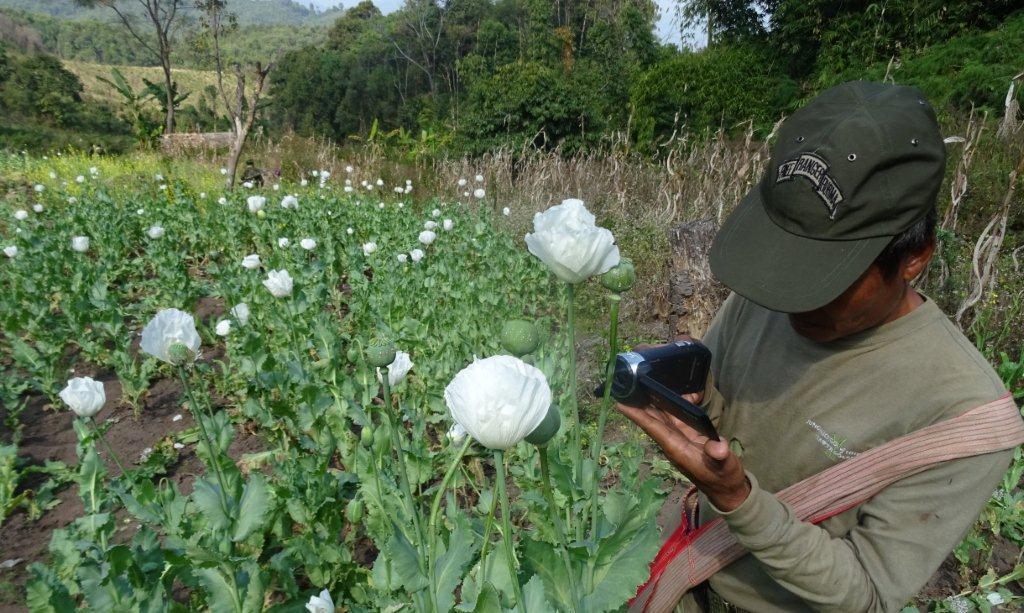
Dear friends,
Thank you for all your help and especially standing with us and the people of Burma for justice in the case of the two Kachin Christian volunteers tortured, raped and killed by the Burma Army. These types of killings have been happening for a long time and are not unique but this time for us seemed especially evil and we feel sick at heart. All during this mission I kept thinking of the women who were killed, of how they died, and of their families. My heart aches for them and their families and we pray for justice.
We have just returned from a series of relief missions to Kachin State and the Ta’ang area of Shan State. There the Burma Army continues its attacks on ethnic minorities and has now opened up a new offensive against the Kokang people of northern Shan State. The Burma Army also over-watches opium production and logging, and protects a gas pipeline that profits them but few others. This mission report is a follow-up to the report on opium in this area that we made after our mission to this same area last year.
During this mission we also documented forced labor, attacks by the Burma Army in Kachin and Shan states and the brutal rape, torture and murder of two young Kachin lady Christian volunteers by the Burma Army. Please see our reports and photos of these attacks at www.freeburmarangers.org.
Opium, Burma Army-controlled narcotic militias and farmers
After conducting medical and Good Life Club (GLC) programs and documenting Burma Army attacks, forced labor, rapes and murders in Kachin State, we moved to northern Shan State to work with the Ta’ang, Shan, and Kachin people there. The team, comprised of Arakan, Kachin, Karen, Karenni, Shan and Ta’ang FBR team members, served the IDPs and villagers we met.
At the same time, the area pro-democracy ethnic resistance, the Ta’ang National Liberation Army (TNLA), was destroying all the opium fields they could. The Burma Army and the local opium militia controlled by the Burma Army, called the Bi Thu Sit, attacked the TNLA and tried to stop their destruction of the opium. In some areas the TNLA had to retreat but in spite of these attacks they were able to continue the destruction of the opium.
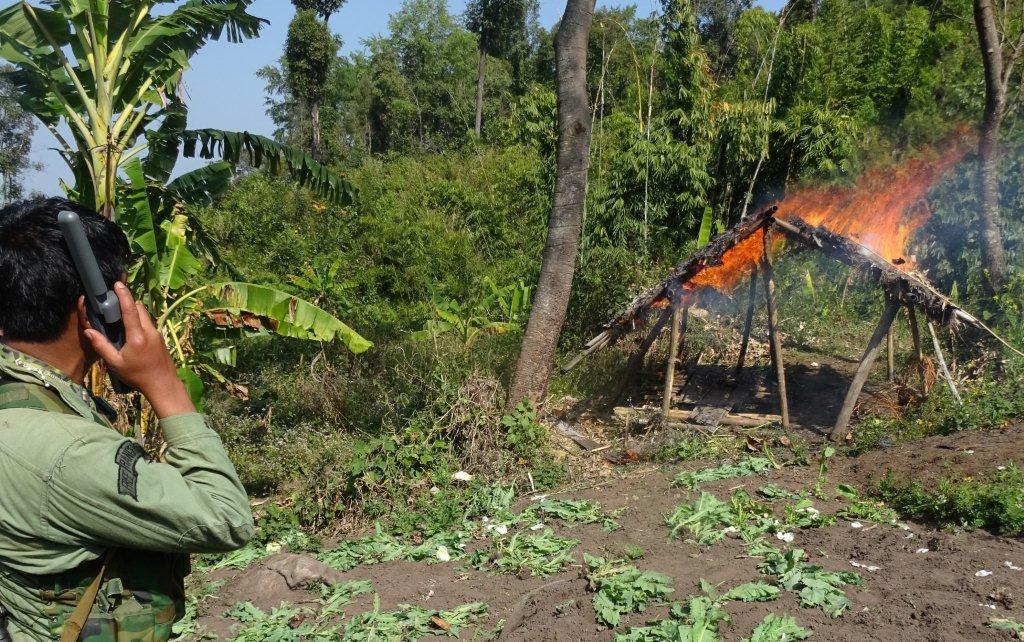
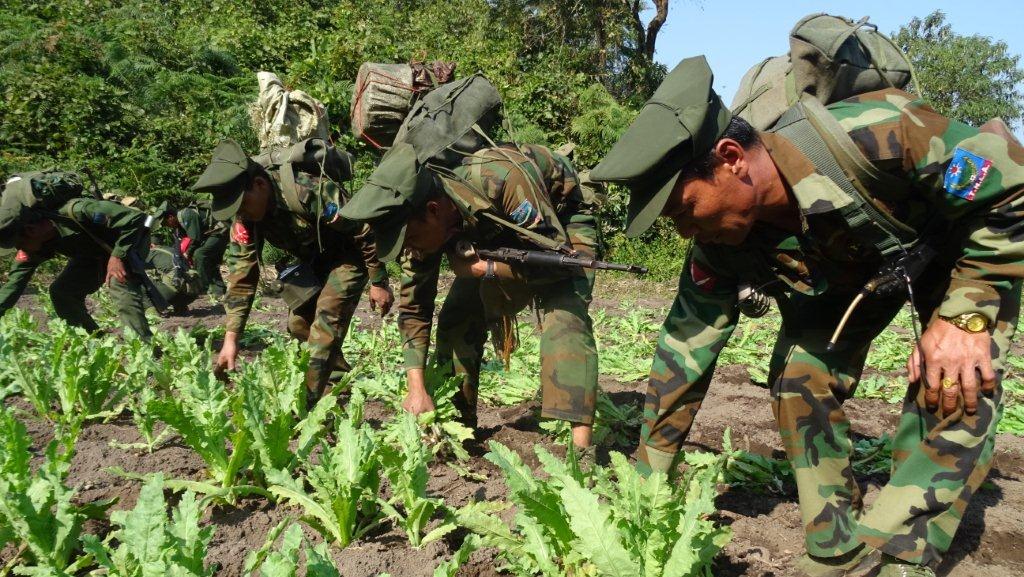
The Ta’ang National Liberation Army (TNLA), the Kachin Independence Army (KIA) and the Shan State Army North (SSA-N) are united in their struggle for freedom in Shan State and all of Burma and also have a policy to eradicate all narcotics. On this mission we first went to the Maiton-Nam Tu area of Shan State, where we conducted a relief mission and documented the TNLA destroying opium. The Burma Army responded by sending troops to stop the destruction of the opium but the TNLA were able to evade them and continue their opium eradication program.
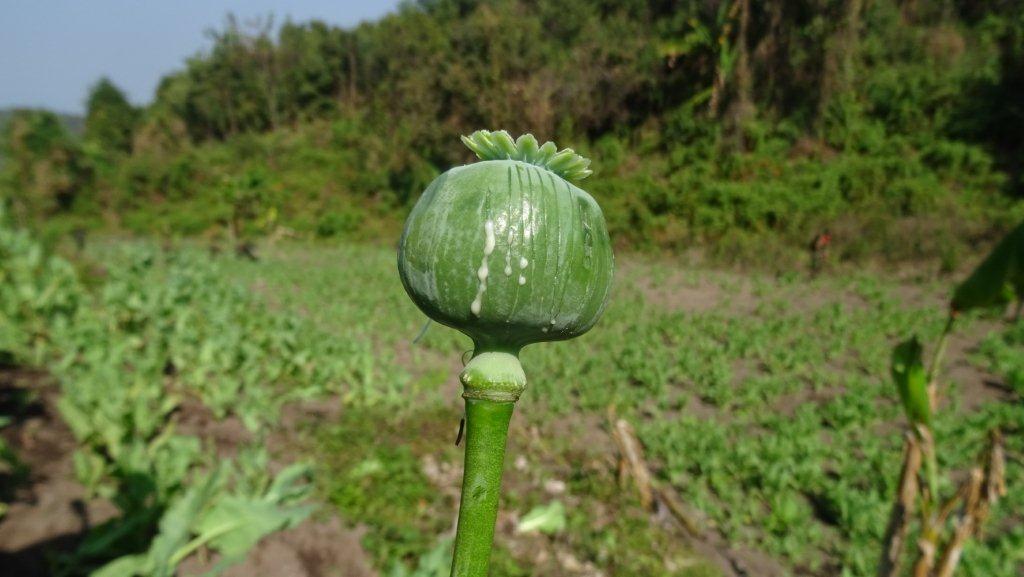
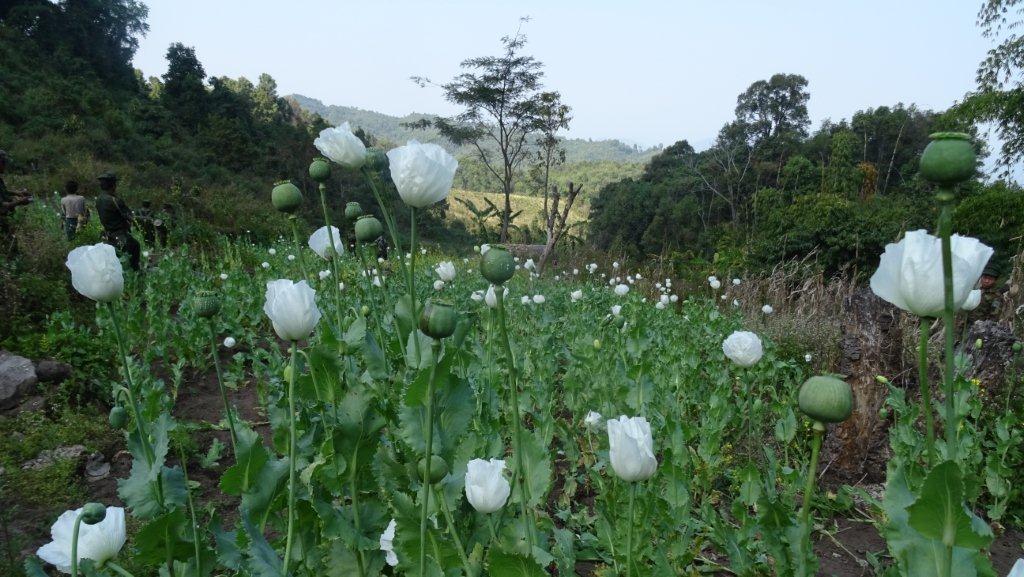
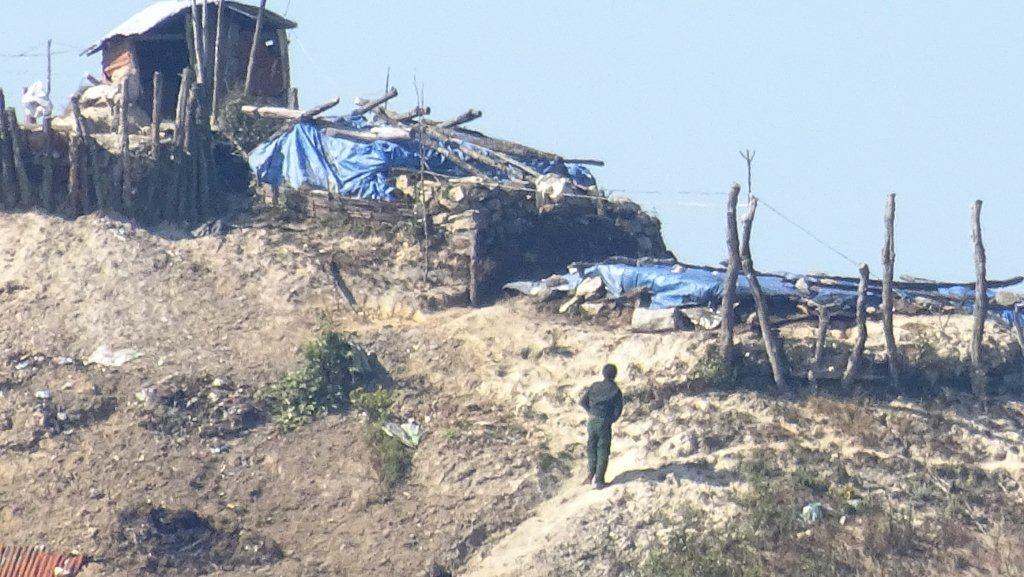
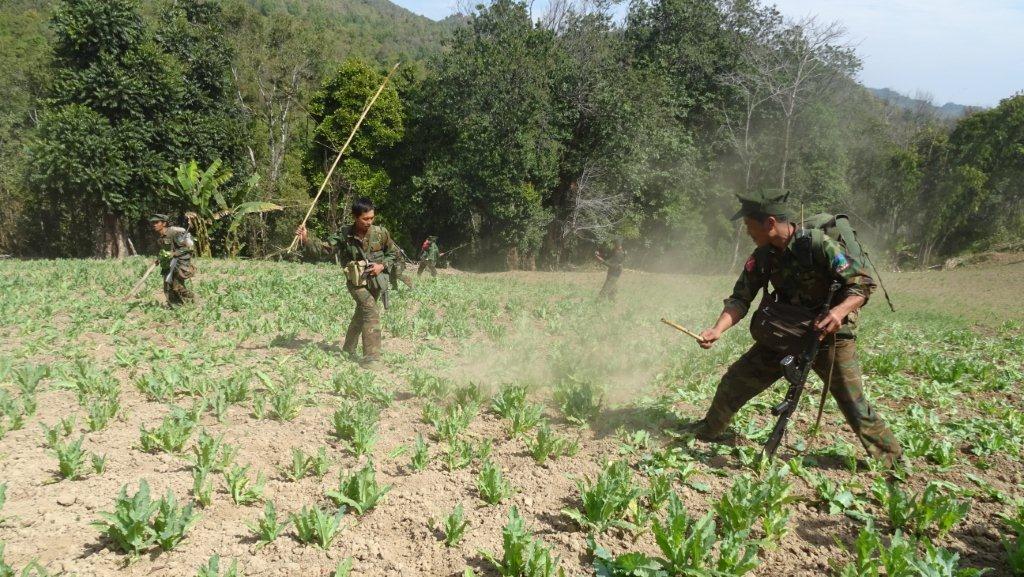
In this area, we were blessed to stay with a family who had a dramatic testimony of lifestyle change from opium growing and use, to a ‘clean life’. A few years earlier, through an Assembly of God pastor two of the older children, suffering from serious drug addiction, had given it up completely, and the family had given up opium farming all together, despite the loss of income, and built up a vibrant church with nightly prayer meetings in the village. Even so, in an interview with the teachers of that village, we learned that an estimated about 70% of the community still had drug issues, related more to amphetamines than opium. This is just one of many communities suffering greatly from the scourge of narcotics and amphetamine production. We spent several days there, and thank God for the mutual encouragement in God’s power to change lives that we shared with each other.
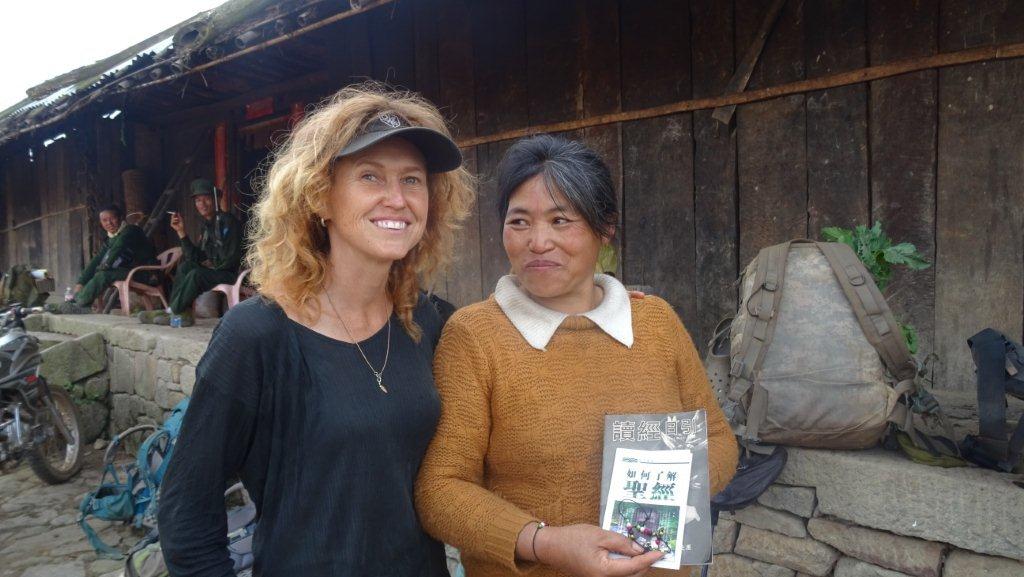
After this we went to the Pang Say area of Nam Kham Township, northern Shan State. Here there are many opium fields worked by Chinese and Lisu families. Most are living in dilapidated shacks of wood, thatch, stone and tattered plastic sheeting. They are all under the control of the Bi Thu Sit and so, in turn, the Burma Army. The Bi Thu Sit is led by an ethnic Chinese man named Kyaw Myint, who is also a member of Parliament representing Namkham No.2 constituency for the Burma government-backed Union Solidarity and Development Party (USDP). Nam Kham is situated on the China-Burma border close to the Muse-Riuli crossing.
Personal Experience with Opium families
During last year’s mission to the Pang Say area we made friends with an ethnic Chinese family of opium farmers and helped them in prayer and funds for food support after their opium fields were destroyed by the TNLA. At first they were angry with us but after we helped them and prayed with them we felt God open a way of love and they softened. Still, going back this time we did not know what to expect and were told the opium farmers hated the TNLA and would not like us either as we traveled with them.
We prayed and wanted to go, to give love and help in any way we could regardless of the consequences. When we walked into the opium village this year, we were greeted warmly by the Chinese lady and family we had stayed with last year. She met us bearing coffee and sweets for our team and we were overcome by her graciousness and generosity despite the difficulties we shared last year. As they spoke Chinese, we could hardly communicate with words but love and affection bonded us. They told us that they had stopped growing opium and that their lives had improved as they now grew beans and were raising cattle, as we had seen other households do as an alternative to opium in that area.
We gave them more funds to help with food as they transitioned away from opium and prayed with them. “Please pray for my son,” the mother said. “The Burma Army captured him and he is in prison now.” We prayed together, Karen gave the family the Good Life Club bracelets with gospel message in different colored beads and a gospel book in Chinese. This was a better-than-expected reunion and we left smiling and wanting to see each other again. As unlikely as it seemed to us, these are friends for life and seeing them again was the highlight of our mission.
From here we climbed a mountain above the village to photograph the camp of the Bi Thu Sit force that controls the area. They operate here under the authority of the Burma Army. This was the same camp we photographed last year and the troops there had just been attacking the TNLA alongside the Burma Army.
After this reconnaissance our mission was complete and we began the long series of walks out of the area. We thank you for your prayers and support and that we were able to make it through all the obstacles and Burma Army on the way.
We ask for prayers for the people who live under the oppression of the Burma Army and thank you for standing with them for freedom, justice and reconciliation. (More details on the Burma Army and Opium Militia are below)
God bless you,
Dave, family and teams
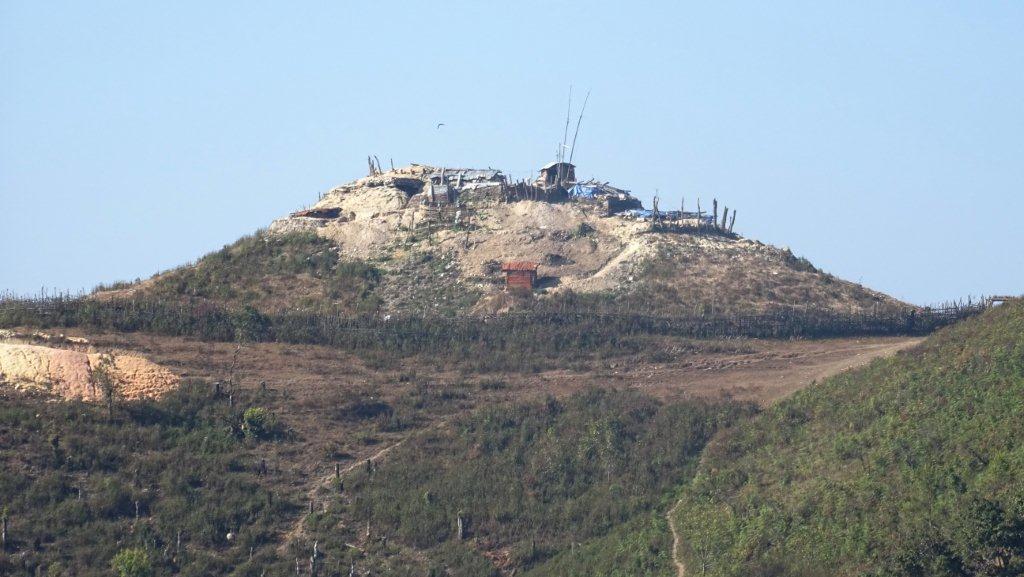
From previous report:
Burma Army Controlled Narcotic Militias
The Burma army controls and supports the People Militia Force (Bi Thu Sit or Ta Ka Sa Pha in Burmese). The militia is led by Kyaw Myint who is a ethnic Chinese but who is a Burma citizen and a member of parliament. Second-in-command of the militia is his younger brother, Kyaw Htwe. Two other brothers, Jang Kwey Ching and Jang Lu, are next in the chain of command of the militia and they also have the duty of overseeing the illegal logging in this area. The militia is headquartered in Pang Say town, Nam Kham Township, and has camps in three other locations south of Pang Say along mountain range that rises over 6000 feet high. The militia is also co-located with Burma Army troops in Mong Wi Village in the Mong Wi valley southeast of Pang Say. The Shwey gas pipeline runs through this town and valley on its way from offshore Arakan State in southwest Burma to China.
Opium production in the past few years has increased in the Namkham area of northern Shan State and this is directly related to Kyaw Myint and his Burma Army-supported militia. (From “Still Poisoned ,” a report by the Palaung Women’s Organization (PWO). According to this report, in the 2010-11 season, 1,109 hectares (about 4 ½ square miles) of land in 15 villages were now being used for opium cultivation, as opposed to 617 hectares two years ago in the same 15 villages. On this mission we saw eight of these villages and there were opium fields around each of them right up to the houses. According to another report by the Shan Herald Agency for News (SHAN), the United Nations Office on Drugs and Crime (UNODC) documented that Shan State accounts for over 90% of the opium production in Burma and that in 2010 the total area under opium poppy cultivation across Shan State increased by 20% from the year before. Also in this report, the UNODC reported that Burma’s share of world opium production had increased from five percent in 2007 to 12 % in 2011. Opium farmers pay taxes of up to 8,000 kyat (US $10) per day to the militia. Some say they pay only a once a year tax of 10,000 kyat or more. The militia also controls methamphetamine trafficking and in this area a pill costs between 2,500 kyat- 3,000 kyat ($3.00- $4.00). The most common is the WY brand.
Interviews with Opium Farmers
While in this village we interviewed some of the opium farmers. Most of the people here were too afraid to answer questions about opium. A few, however, were willing to talk and here is what we learned.
Q. Why do you grow opium?
A. Opium is the main thing in this area. Here rice does not grow well and so opium is the way we know to grow for money. We buy rice from other villages. Note: Some here said they have been growing opium for 5-6 years while others said over 16 years.
Q. Who owns this land and where do you sell the opium you farm here?
A. This is our land, we own it. Nearby villagers come and buy the opium but we don’t know who they are. They are Chinese, Ta’ang and Lisu people. But most the people here are Chinese and are all considered to be Kyaw Myint’s people.
Q. How much do you produce here?
A. The crop depends on the weather, but we average about 3 viss (7.5kg) a season. The price is usually 600,000-700,000 kyat (or about $600-$700USD) per viss (about $2800 a year). Last year we made 800,000 or 900,000 kyat ($800-900USD).
Q. How is production?
A. Opium production is up and down depending on the rains. We try to harvest during February and March before the rains. During the rainy season we can’t harvest because it washes away the opium residue on the bulbs. During harvest time they we do 4-5 harvests a month.
Q. Who is the authority in this area?
A. The Burma Army’s militia has control here. They are a Chinese militia under Kyaw Myint, who work under the Burma Army and they control the opium.
Q. Are there taxes on the opium?
A. Yes, the Peoples Militia Force (Kyaw Myint group) collects taxes once a year – they collect 10,000kyat per family. The militia who collect the taxes are stationed at Wa Ya Bum camp on Wa Ya Bum mountain. There are more than 10 militia troops fulltime at Wa Ya Bum camp and over 60 who patrol the area. The militia are Chinese, but they are a different clan than we are. They all belong to the militia group headquartered in Pang Say led by Kyaw Myint.
Q. What is the role of the Burma Army?
A. The Burma Army has overall control. The militia works under them. The Burma Army doesn’t usually come to the village, but five months ago they came on a patrol. Nothing happened. Those Burma Army soldiers were from Kutkai. Other times the Burma Army comes and takes and destroys things.
One family described the opium harvesting process:The opium plant flowers, then the petals fall away and the bulb ripens. Opium is then harvested from the bulb. A multi-bladed scoring tool is used to score the bulb, usually twice on one side, making six scores. The raw opium oozes from the bulb scores and is then twice-scraped from the bulb with a short, wide, curve-bladed knife. The opium oozes out white, and is gathered on the wide knife where it turns brown. One bulb can be harvested from four to five times a month for about two months a year. It is sold by the viss for 600,000 -700,000 kyat per viss ($600-$700). One viss is about 2.5kg.
